Lenasia 70 history: where shall we bury our beloved?
In Lenasia as elsewhere in South Africa, while the sacred dominated the burial of deceased persons within families, it was overshadowed by the racial policies of successive white governments, says Dr Ismail Vadi
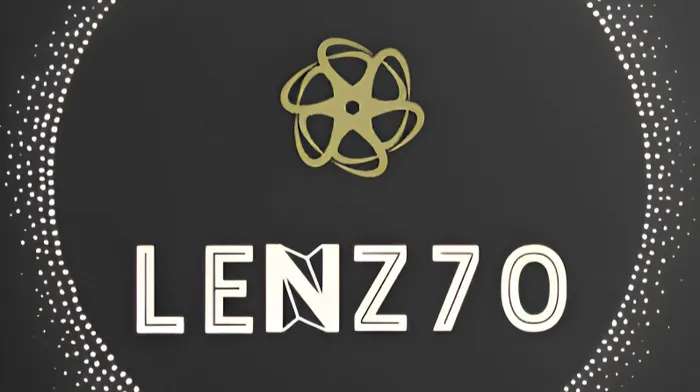
Lenasia turns 70
Image: Supplied
BURIALS and cremations are private affairs where family members and friends of the deceased gather to intern a beloved person. They are embedded in religious practices, traditions and norms wherein the internment or cremation of a deceased is seen as a sacred duty.
In Lenasia as elsewhere in South Africa, while the sacred dominated the burial of deceased persons within families, it was overshadowed by the racial policies of successive white governments.
Since 1950, due to the racialised nature of human settlements in Johannesburg under apartheid, burials of persons from different racial groups took place in racially designated cemeteries. This became the norm particularly after the passing of the Group Areas Act. Added to this is the demarcation of cemeteries into different sections based on religious identity.
Prior to the introduction of apartheid policy in 1948, residents living in Johannesburg and surrounds, including Indians, buried their deceased in different sections of the Braamfontein, Roodepoort, Newclare and Kliptown cemeteries. These cemeteries had developed in the late 19th and early 20th centuries, after the discovery of gold on the reef and consequent influx of miners and speculators into the fast-growing tent-town that Johannesburg had become.

The Brixton Crematorium, 1918
Image: Supplied
Before that burials were on privately owned farms such as Alberts Farm, Bezuidenhout Valley and Klipriviersberg. Other private cemeteries also arose under the control of churches, hospitals and mines. Historically, cremations were done at the Hindu Crematorium in Brixton in Johannesburg, which is on the doorstep of Vrededorp.
This was established in 1918, due to the campaign for a crematorium by the Transvaal Indian Congress and Tamil Benefit Society leader, Thambi Naidoo, who incidentally is the grandfather of veteran Lenasia ANC leader, Prema Naidoo. This was a wood-burning crematorium, which is now declared a national monument. In 1956, a gas-fired crematorium was built alongside the old crematorium and its chapel, which is still in use presently.
The Muslim section of the cemetery is located a few kilometres away at the Braamfontein Cemetery, opposite the University of the Witwatersrand.
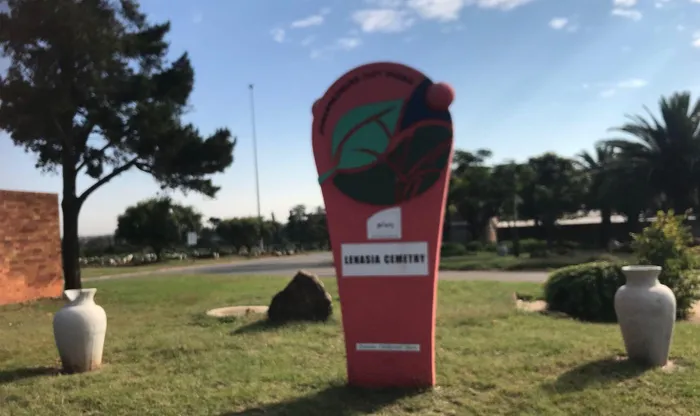
Lenasia Muslim Cemetery was established in 1972
Image: Supplied
Thambi Naidoo was instrumental in the construction and official opening of the first Hindu crematorium, which was presided over by the Mayor of Johannesburg, Thomas Frederick Allen. Naidoo’s modest business, Dravedian Store, contributed £10.10.0 to the project.
When Indians were forcefully relocated to Lenasia in the mid-1950s, there was no cemetery and crematorium locally. Families had to make extraordinary arrangements to intern their beloved ones in the established cemeteries of Johannesburg, which were on average twenty kilometres from Lenasia.
Also, there were no burial societies or organisations operating in the community. In fact, the first Muslim burial coach in Lenasia was made available by the Saaberie Chishty Trust only in December 1968, with burials of Muslim deceased persons taking place either at the Kliptown or Newclare Cemeteries. The Lenasia (Avalon) Cemetery for “Indians” was established by the Johannesburg City Council in 1972, seventeen years after the establishment of the township.
This primarily served the Muslim community. In the same year the Avalon Cemetery was opened alongside it as the second largest in the city catering for “Africans”.
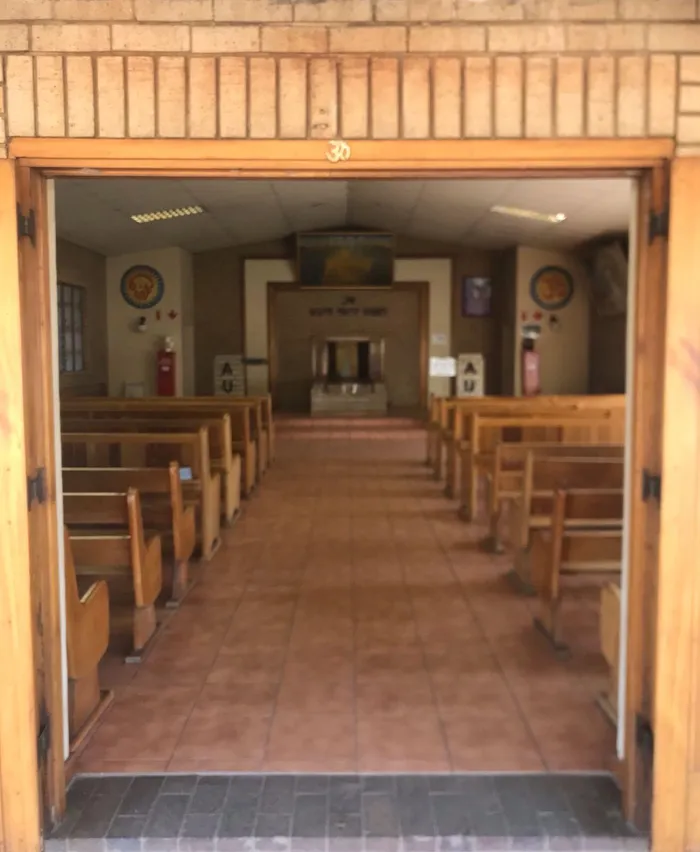
Lenasia Hindu Crematorium, 1986
Image: Supplied
As for a construction of a crematorium, an initial application was made on May 25,1974, by Poonee’s Funeral Parlour to the City Council of Johannesburg to establish a privately run crematorium for service to the Hindu and Christian communities. After several such representations the Council finally informed the company that it intended to establish a crematorium for public use.
The Lenasia Hindu Crematorium was built eventually by the Johannesburg City Council fourteen years later in August 1986. By then the campaign initiative had passed onto the Hindu Crematorium Committee led by EL Beharie (Chairman) and Chiman Naran (Secretary). The other members of the Committee were Manilal Morar, Manickum Naidoo, Shantilal Mistry, Keshav Lala, Magan Kalidas, Lalabhai Gosai, Ranchod Pema, Magan Chitta, Ranchod Daya and Kishore Mistry.
Among the prominent community leaders that were cremated at the Lenasia Hindu Crematorium were veteran educationist, Billy Morgan, and former Robben Island political prisoners, Reggie Vandeyar and Laloo “Isu” Chiba.
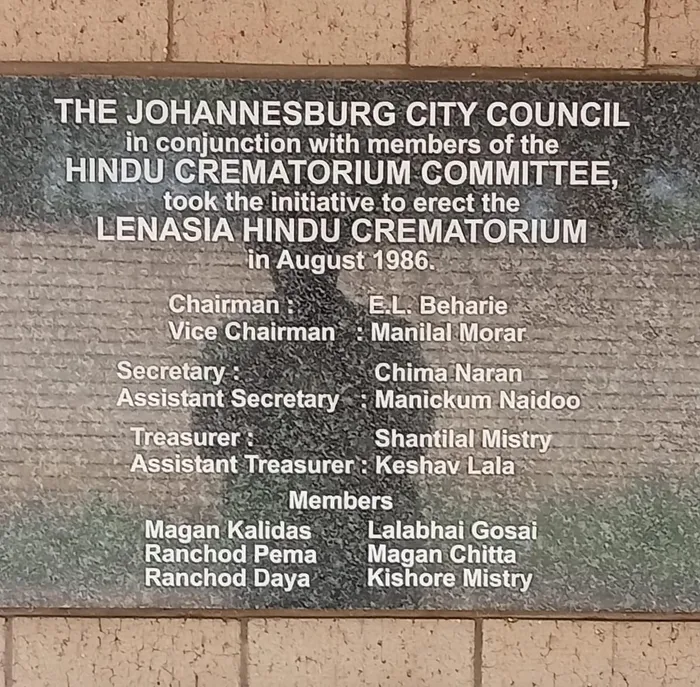
Lenasia Hindu Crematorium, 1986
Image: Supplied
The Lenasia Muslim Cemetery has several renowned and celebrated political, community and religious leaders buried within its precinct.
In this cemetery are the graves of (Maulana) Ismail Saloojee (a scholar and past President of the Transvaal Indian Congress); Yusuf Akhalwaya (a member of Umkhonto we Sizwe, the armed wing of the African National Congress, who was killed in action in December 1989); Dr Abubaker Asvat (Head of the Health Desk of the Azanian People’s Organisation, who was murdered in his surgery in January 1989 in Soweto); Ahmed Essop (educationist and novelist), Rehana Adam (community activist and leader of the Lenasia Women’s Congress), the brothers Shabir and Abbas Sayed (founders of the Saaberie Chishty Society), (Hafiz) Abdurahman Mia and Qamar Ali Shah Khaki (both Sufis) and (Maulana) Yahya Bham, a religious scholar and founder of the Lenasia Muslim School.
However, the celebrated Lenasia ANC leader, Ahmed Kathrada, is buried in Heroes’ Acre at the West Park Cemetery in Johannesburg.

Funeral of Lenasia ANC political prisoner, Reggie Vandeyar, September 17, 2015
Image: Supplied
Today, Lenasia has several community-based burial groups that cater for the internment of Muslims. They are the Central Islamic Trust Burial Society; the Jamiatul-Ulema Burial Committee; the Saaberie Chishty Burial Society and The Clique. These organisations are locally funded and are supported by volunteers from the community.
They assist families with the religious rites of the deceased, registration of deaths, retrieval of bodies from mortuaries, hearse facilities and the actual internment of the deceased. They also arrange for the mortal remains of Muslim immigrants to be flown throughout Southern Africa as well as to countries such as Pakistan, India, Palestine, Iran, Turkey and Dubai, if their families so wish.
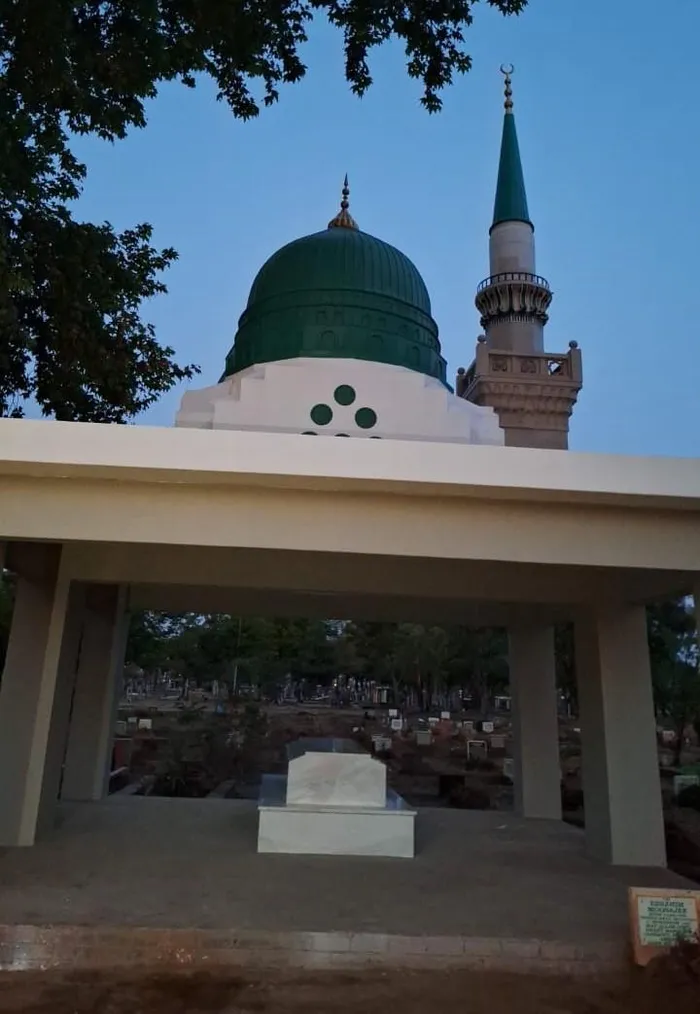
Shrine of Qamar Ali Shah Khaki at the Lenasia Muslim Cemetery, 2022
Image: Supplied
These organisations are supported by a volunteer-based traffic committee that facilitates traffic management during funerals.
In 2021, Johannesburg’s City Parks announced that the Lenasia Muslim Cemetery was fully occupied. However, during the latter part of that year, the Saaberie Chishty Burial Society in partnership with community volunteers, notably the businessman Shaheem Ismail, embarked on a project to clear and level the remaining available land at the cemetery to yield additional grave sites.
Approximately four hundred grave sites were made available through this project for community use. In recent years, cemeteries in Johannesburg have been sorely neglected by City Parks. The problems at the Lenasia Cemetery and Hindu Crematorium relate to poor maintenance by the Council, vandalism, criminal attacks on visitors to cemeteries, and the collapse of graves due to heavy rainfall patterns. Were it not for the sterling efforts of community volunteers the Lenasia Cemetery and Hindu Crematorium would be derelict.
This comes as an additional financial burden to Lenasia residents, who pay for volunteer cleaners and the upkeep of the cemetery.
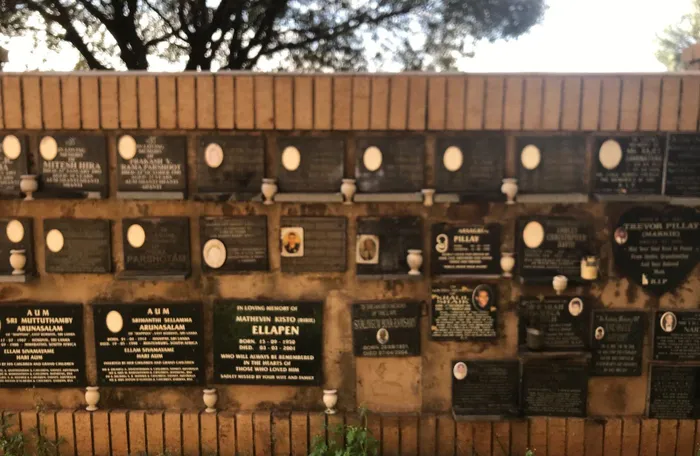
Memorial wall at Lenasia Hindu Crematorium
Image: Supplied
Johannesburg City Parks asserts that “cemeteries carry a rich history, told through their graves, memorial gardens, memorial walls, mausoleums and crematoria…To walk the cemeteries of Johannesburg is to explore the city’s own history; the pioneering farmers, the city’s founders, the heroes, the fallen, the striking miners, the Boer concentration camp victims, Christians, Muslims, Jews”.
Yet, its management and staff have failed in maintaining the Lenasia cemetery and crematorium to acceptable standards.In any event, the Lenasia Muslim Cemetery and Hindu Crematorium carry the history of our forebears and of those who contributed selflessly to the rebuilding of our communities after the destruction wreaked upon us by the apartheid government.
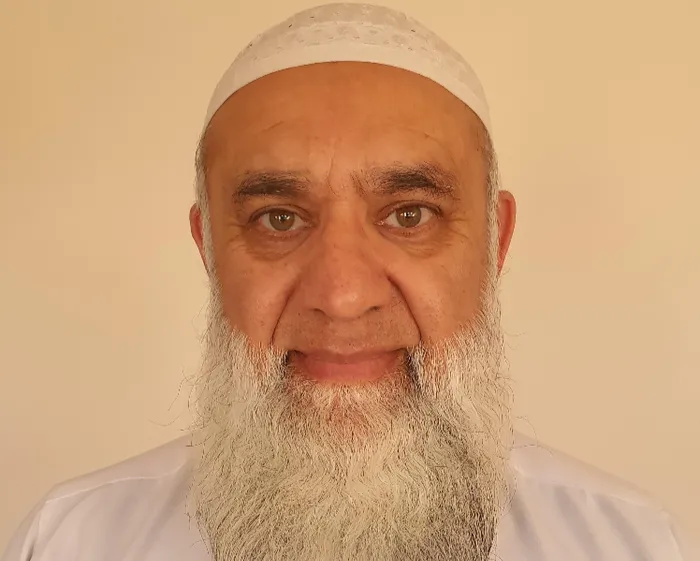
Dr Ismail Vadi
Image: Supplied
Dr Ismail Vadi is a former ANC MP and MEC for Roads and Transport in Gauteng. Interested persons can contact him on 082 772 3119.
Related Topics: